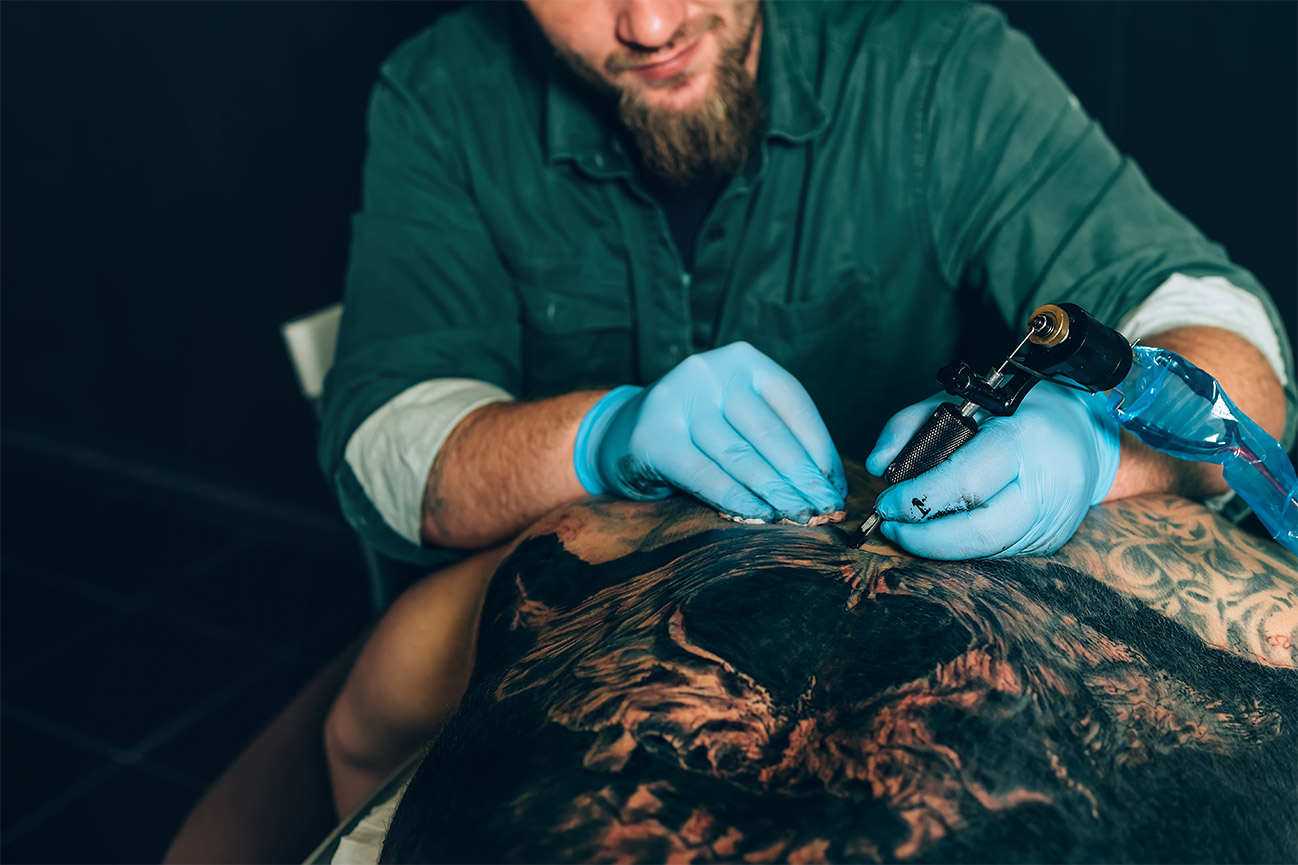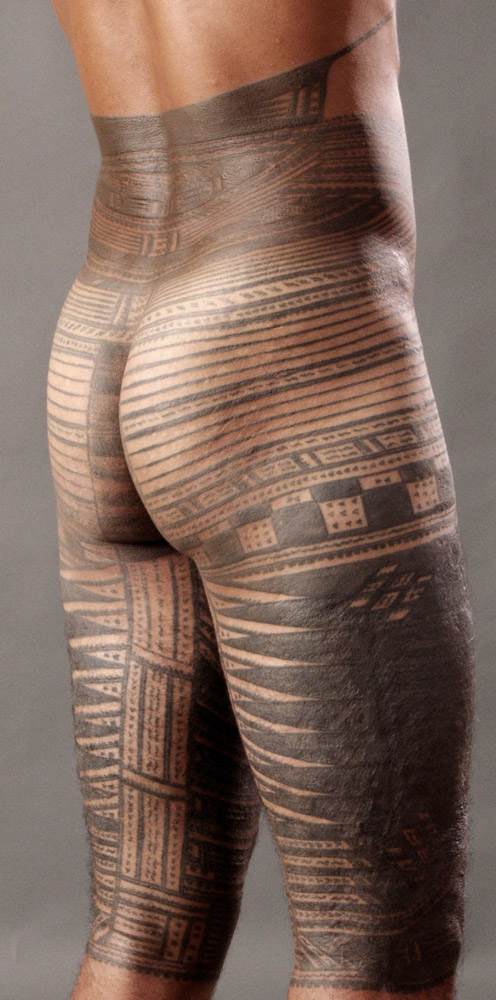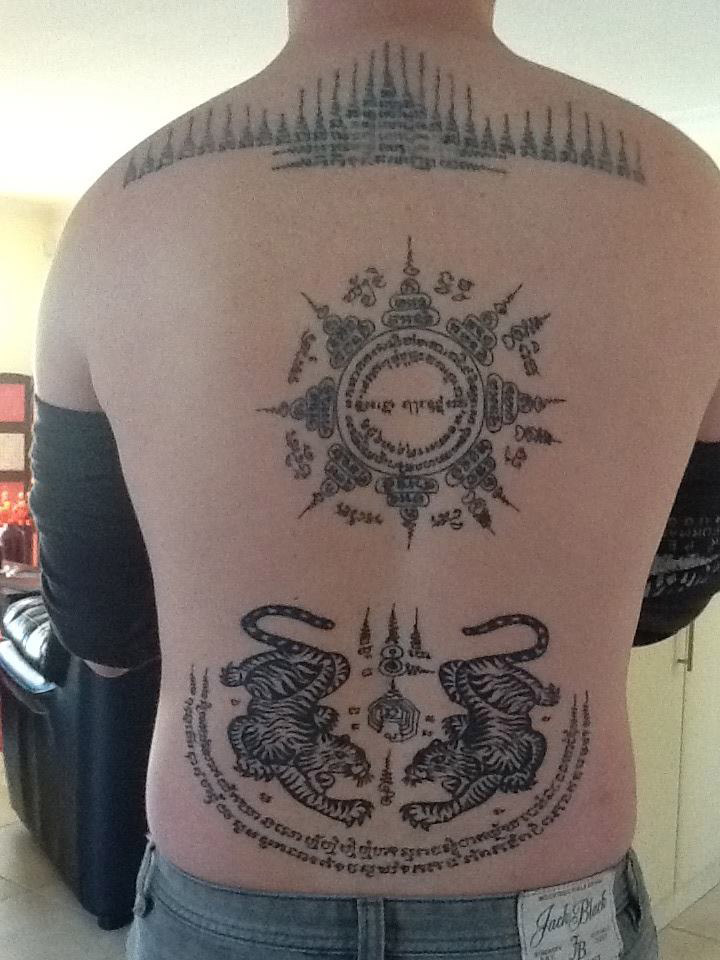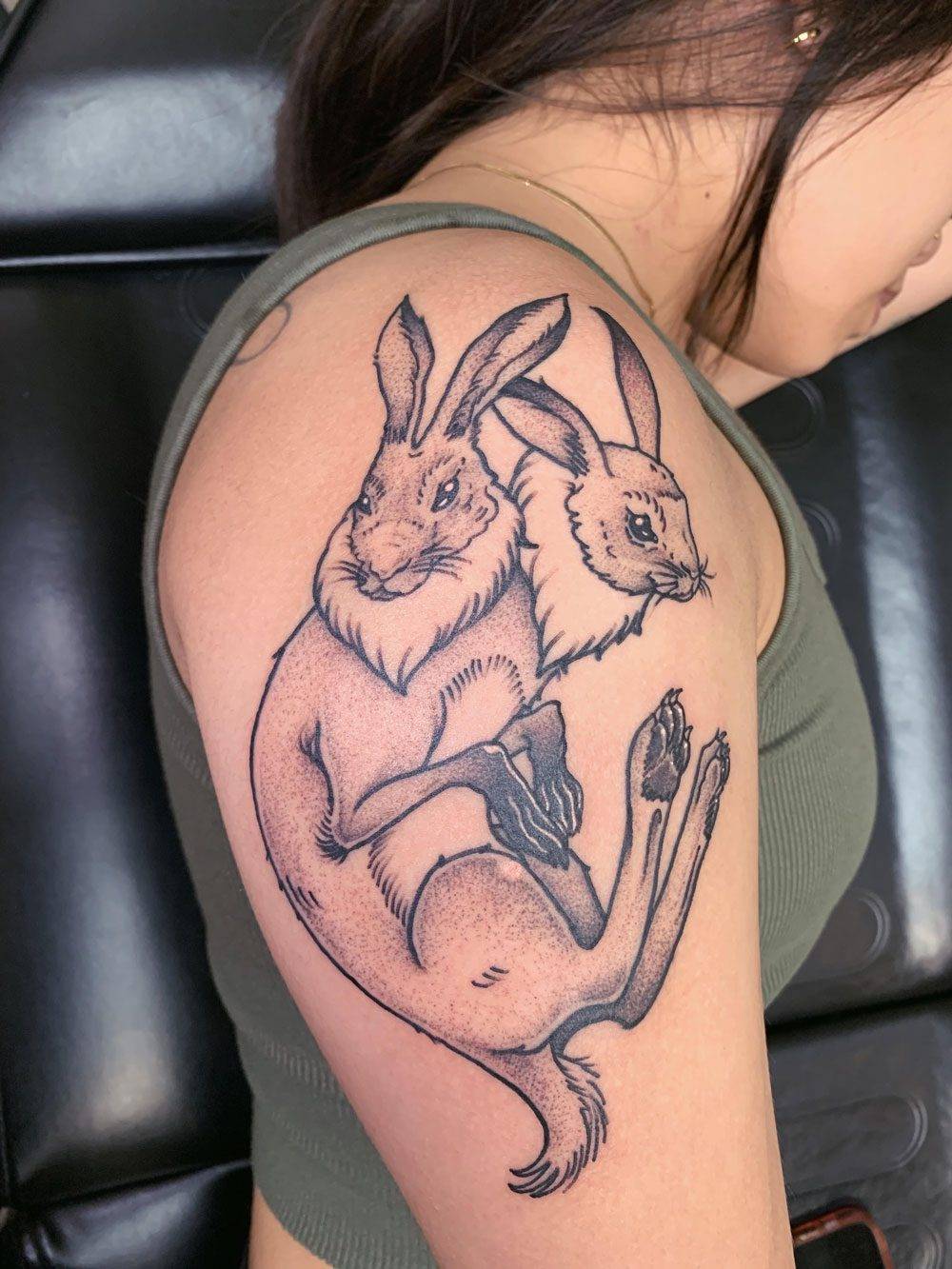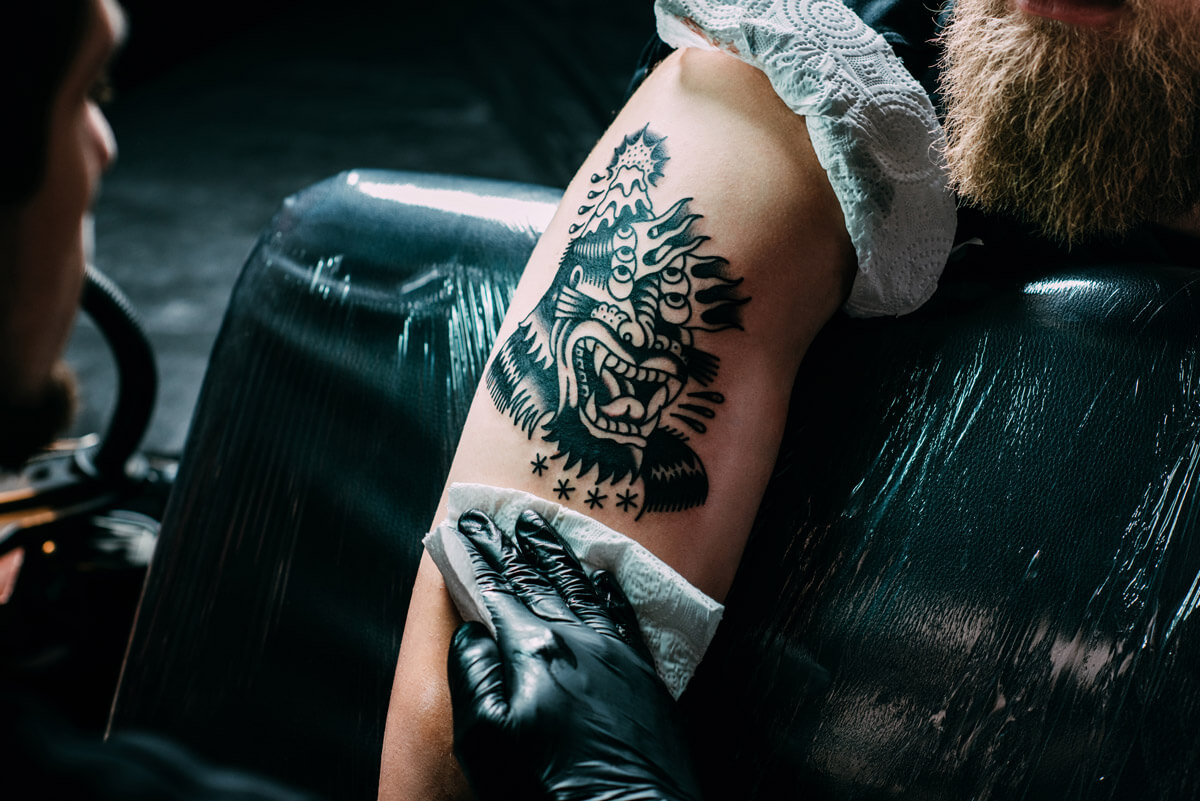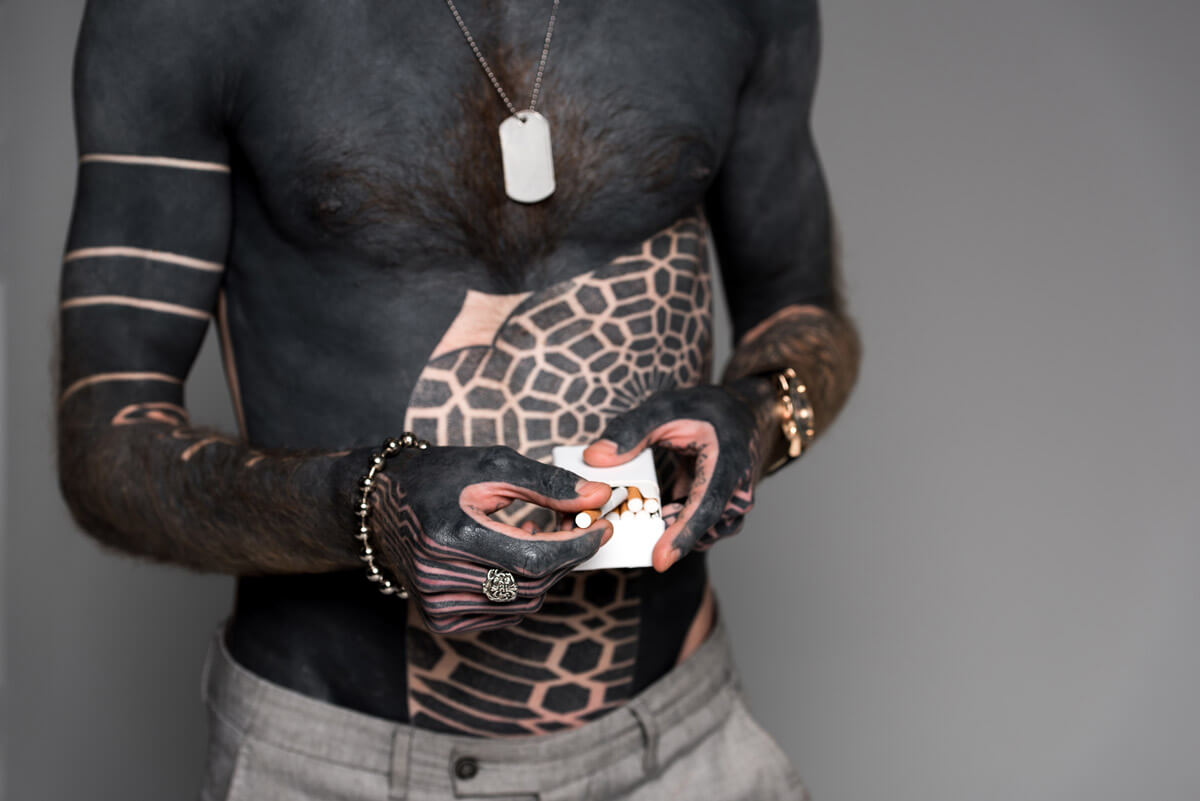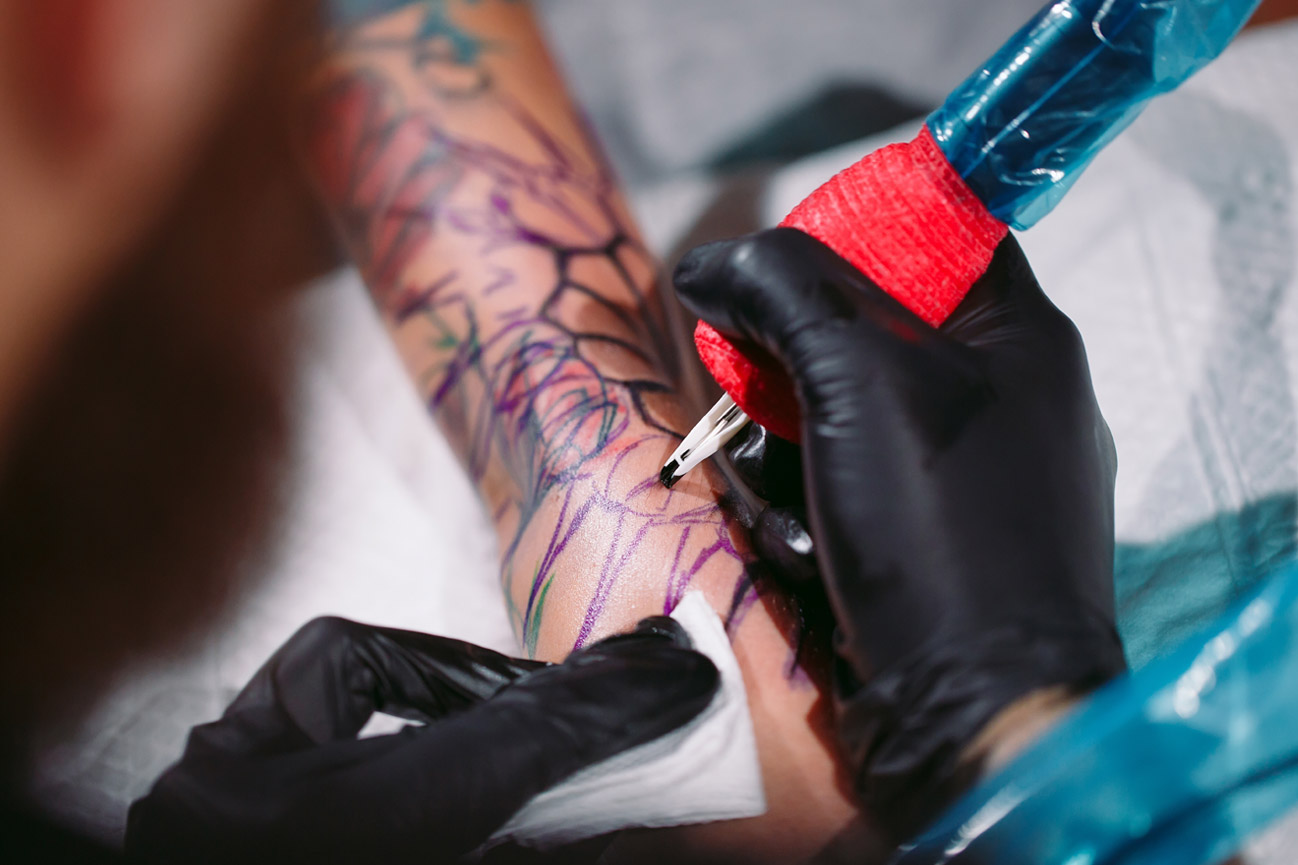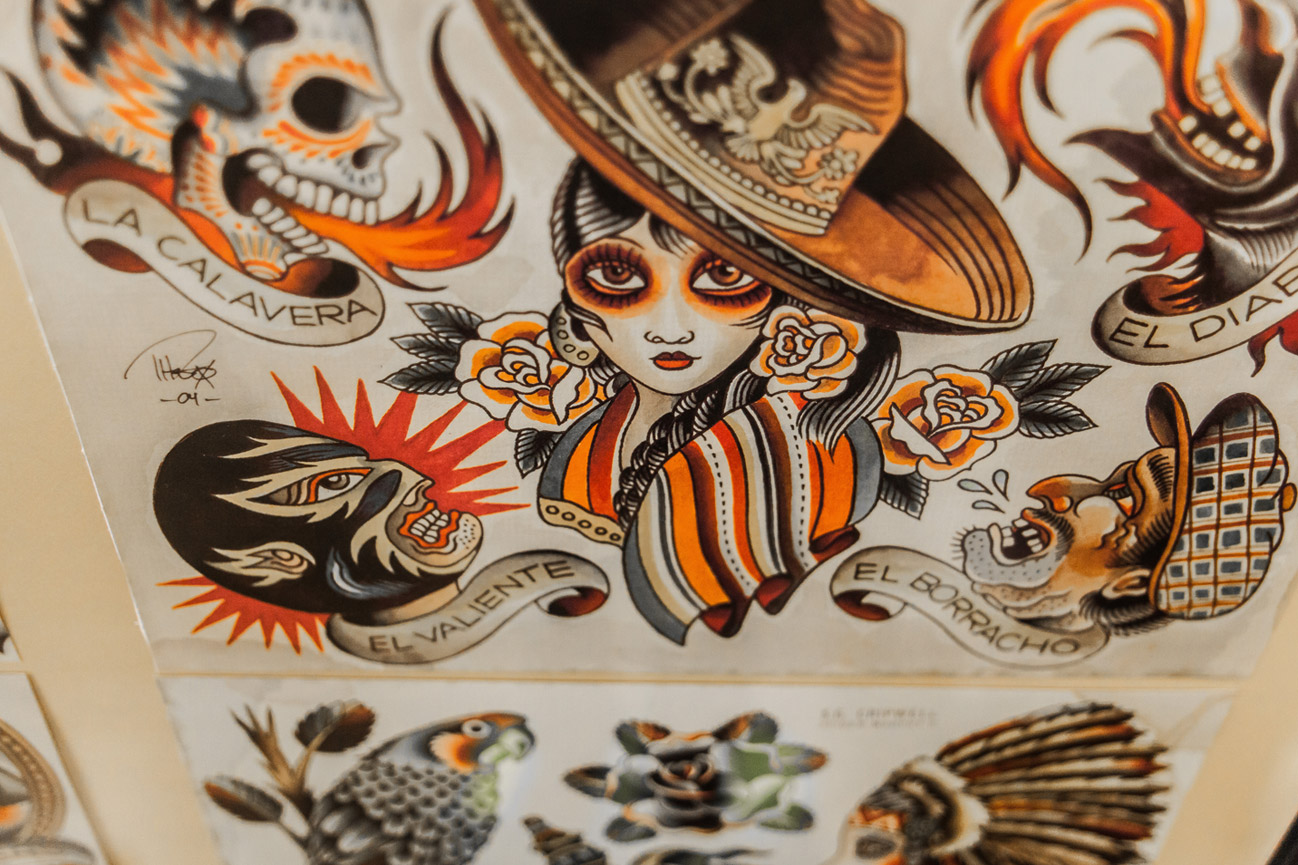Introduction: Blackwork Tattooing
In the dynamic and ever-evolving universe of tattooing, blackwork emerges as a beacon, illustrating the profound impact of monochromatic artistry. Relying exclusively on the intense and unyielding hue of black ink, this distinctive style manifests a spectrum of expressions that captivate both the beholder and the adorned. From the finely-detailed intricacies of geometric patterns, tribal symbols, and pointillist techniques to the audacious and commanding expanses of solid black expanses — aptly termed as “blackout tattoos” — blackwork remains a testament to both the artist’s skill and the wearer’s conviction.
Venturing into the intricate alleys of blackwork isn’t just an exploration of an artistic style; it’s an immersion into a narrative that spans millennia. A narrative woven with tales of ancient traditions, rites of passage, cultural identities, and personal rebirths. As we journey further into this mesmerizing world of blackwork, be prepared to uncover layers of its rich history, to marvel at its contemporary iterations that blend tradition with innovation, and to understand the profound allure that keeps enthusiasts returning to this timeless style. Whether one is drawn to it for its sheer aesthetic allure, its powerful symbolism, or the transformative stories it often encapsulates, blackwork remains an unparalleled force in the vast tapestry of tattoo artistry.
A Historical Overview: Roots in Ancient Traditions
Blackwork tattooing, a style we view today as decidedly modern and avant-garde, is deeply rooted in traditions that span millennia. The use of black as the primary color for tattoos wasn’t just an aesthetic choice—it was a pragmatic one. Black pigment, sourced naturally from soot or charcoal, provided durability and maintained its prominence against the skin, resisting fading over time. This lasting quality, combined with its stark contrast against human skin, made black an obvious choice for ancient tattoo artists.
Polynesia: The vast stretch of islands in the Pacific Ocean known as Polynesia is a tapestry of tattooing traditions, where every dot and line carries profound cultural weight. From this rich culture emerged the term ‘Tatau’, which eventually gifted the English language the word ‘tattoo’. Tattoos in Polynesia were more than just skin-deep; they were narratives, status symbols, and spiritual emblems. For instance, the Samoan ‘Pe’a’ for men is a comprehensive tattoo that spans from the waist to the knees. Beyond its intricate geometric patterns, the Pe’a tells tales of bravery, protection, and societal hierarchy. On the other hand, Samoan women might wear the ‘Malu’, an intricate piece that, while more delicate than the Pe’a, envelopes the legs in designs denoting grace, beauty, and maturity.
Thailand: The ‘Sak Yant’ tattoos of Thailand stand as a remarkable blend of artistry and spirituality. Derived from Sanskrit, ‘Sak’ means to tattoo, and ‘Yant’ refers to a geometric design believed to harness magical powers. These tattoos are traditionally administered by monks or ‘Ajarns’, specialized tattoo masters who, instead of machines, use sharpened bamboo sticks or steel rods to hand-poke the design into the skin. As the Ajarn works, chants accompany each puncture, infusing the tattoo with spiritual energy. Among the pantheon of Sak Yant designs, the ‘Hah Taew’ or Five Lines is iconic. Each line of this tattoo contains specific Pali phrases, offering blessings that range from protection against negative forces to enhancing charisma and fortune. Another esteemed design is the ‘Gao Yord’ or Nine Peaks, symbolizing the sacred peaks of Mt. Meru, a centerpiece in Buddhist and Hindu cosmology. Those adorned with the Gao Yord are believed to garner divine protection and celestial blessings. While Sak Yant’s global popularity has surged due to celebrities and travelers, for the Thai, it remains a poignant link to tradition, spirituality, and ancient practices.
Native American Cultures: Indigenous tribes of North America deeply embraced tattooing, with blackwork serving as a central pillar in their culture. Among them, the Iroquois integrated tattoos to signify clan affiliations and personal milestones. Key symbols like the bear or wolf denoted specific clans and their associated virtues. Meanwhile, the Cree tribe viewed tattoos with a therapeutic lens. For them, tattooing areas experiencing chronic pain wasn’t merely symbolic, but a mix of art and medicine, channeling healing energies. Across tribes, the reverence for blackwork illustrates its profound role in shaping identity, tradition, and spiritual beliefs.
Berber Women of North Africa: The Berber women trace their lineage to the indigenous people of North Africa, primarily inhabiting regions stretching from the coast of Morocco to the deserts of Egypt. Rich in history and culture, these communities have maintained their distinct identity for thousands of years in the face of successive invasions and cultural integrations. For the Berber women, facial tattoos were far more than mere adornments. Each mark told a story or indicated a particular status. For instance, a series of dots might be representative of a woman’s lineage or her particular tribe, enabling her to be recognized within larger Berber communities. Lines, often vertical or horizontal on the forehead or cheeks, might signify that a woman had entered womanhood or had been wed. Some symbols, like the diamond or the zigzag, held protective qualities, believed to ward off evil spirits or bring prosperity. Upon significant life events such as her first menstruation or the birth of a child, a woman might receive a new tattoo. Each tattoo, intricately linked with stages of life, personal experiences, or the spiritual realm, showcased the depth and complexity of Berber traditions.
Upon closer examination of these cultural practices, it becomes evident that blackwork is more than just a visual art form. It represents a profound amalgamation of personal narratives, societal norms, and deep spiritual connections that traverse generations and continents. Every tattoo, whether a mere dot or an intricate design, is a testament to history, traditions, and the identity of its bearer. Each inked symbol and pattern offers insights, narrating tales of both individual experiences and the collective ethos of communities worldwide.
Modern Blackwork: A Spectrum of Styles Geometric & Pattern Work: Derived from ancient motifs and spiritual symbols, geometric and pattern work has been given a contemporary twist by modern tattoo artists, creating intricate and captivating patterns. Using precise lines, symmetrical designs, and complex geometric shapes, these tattoos often draw from sacred geometry, which imbues certain shapes and proportions with symbolic meanings. Mandalas, representing the universe in Hindu and Buddhist symbolism, are frequently featured. Artists like Chaim Machlev have elevated this style, seamlessly blending linear designs with more organic forms, creating a fusion of structured patterns with the unpredictability of nature.
Dotwork: Dotwork, a testament to an artist’s patience and precision, creates visuals that are both subtle and impactful. It’s a shading technique that employs dots of varied sizes and densities to create gradients and textures, often resembling the intricacies of pointillism art. While dotwork can be a standalone design, it’s frequently intertwined with geometric designs, mandalas, and even realistic representations, adding dimension and a tactile sense of depth to the piece.
Illustrative Blackwork: Taking the heart of illustration and imprinting it on the skin, illustrative blackwork uses solely black ink but incorporates various shading techniques to achieve depth and movement. Merging storytelling with art, this style can depict everything from mythical beasts and folklore tales to detailed botanical drawings and vivid landscapes. The crux of this style is its emphasis on depth, contrast, and meticulous detailing, enabling even simple subjects to come alive with a lifelike or occasionally surreal quality.
Blackout Tattoos: A daring and avant-garde approach to body art, blackout tattoos redefine what tattoos can represent. As the name suggests, they involve the inking of extensive areas, sometimes entire limbs, in deep black ink. While they initially gained traction as a method to conceal older tattoos, they’ve evolved as a distinct art form. Beyond the immediate stark aesthetic, the black canvas has become a foundation for white ink tattoos. The ensuing contrast of ethereal white designs set against a black backdrop offers a luminous, striking effect.
The plethora of blackwork styles paints a vivid picture of the boundless possibilities encapsulated in one color. From the gentle finesse of dotwork to the bold expanses of blackout tattoos, blackwork captures both the artist’s imagination and the wearer’s narrative in the richest shades of black. This evolution and diversity in styles underscore the adaptability and depth of blackwork, reaffirming its evergreen appeal in the dynamic world of tattooing.
In the vast domain of tattoo artistry, blackwork emerges as a compelling blend of tradition and modernity. Traversing this genre reveals a spectrum of styles, each with its unique attributes and significance. From the geometric intricacies to the audacious blackout tattoos, blackwork offers a diverse range, all within the bounds of monochrome. As we delve deeper, we’ll uncover the artistry, symbolism, and techniques that make each style a testament to the tattooist’s vision and craftsmanship.Let’s journey through these styles, highlighting the skill and precision behind every blackwork creation.
Rebranding with Blackout Tattoos: A Canvas of Renewal and Reinvention
In the world of body art, tattoos often serve as permanent markers of personal milestones, beliefs, or passions. But as life unfolds, perceptions shift and sentiments evolve. What was once a cherished emblem might no longer resonate, or perhaps, past choices may no longer align with one’s present self. Herein lies the beauty of blackout tattoos – they offer a pathway to renewal and reinvention.
Blackout tattooing has gained momentum in recent years as a radical and effective solution for those seeking to overwrite their past. This technique involves blanketing large skin areas with bold black ink, transforming previous tattoos into shadowy silhouettes beneath a new dark canvas. It’s not merely about covering up; it’s about reclaiming and redefining one’s skin and story. For some, this approach provides an opportunity to shed memories or choices they regret. Instead of undergoing painstaking, often expensive, and not always effective tattoo removal procedures, blackout tattoos offer a swift, definitive alternative. The deep black ink not only masks older tattoos but also symbolizes a decisive break from the past, a turning of the page.
Blackout tattooing isn’t always about erasing the old; it can be about enhancement and collaboration. Some individuals choose to keep elements of their existing tattoos, intertwining them with the blackout design. By selectively blanketing areas with black ink and letting specific segments shine through, artists can create a compelling juxtaposition of old and new, light and dark. This creates a dramatic, contrasting visual where cherished designs emerge from the shadows, emphasizing their significance against the bold black backdrop. Additionally, with the growing popularity of white ink tattoos, the dark canvas of a blackout tattoo sets the stage for striking white ink designs. These ghostly white patterns atop the deep black create a luminescent effect, a testament to the transformation and rejuvenation that blackout tattoos can herald.
In essence, blackout tattoos are more than just a cover-up method. They are a testament to growth, change, and personal evolution. By turning the page on old chapters or highlighting the stories that still matter, individuals harness the power of blackout tattooing to reinvent themselves, and reclaim their skin.
Conclusion: Blackwork Tattooing
Blackwork tattooing is more than just ink on skin; it’s a narrative, a tradition, and an art form. From the profound cultural weight carried by Polynesian tattoos and the spiritual depths of Thailand’s Sak Yant, to the identity markers of the Berber women and the therapeutic symbols of Native American tribes, blackwork embodies a vast and rich history. Yet, its modern iterations — be it the precision of geometric designs, the subtlety of dotwork, or the audacious canvas of blackout tattoos — also echo personal evolutions, rebirths, and the ever-changing nature of self.
Blackout tattoos, especially, highlight the dynamic relationship between past and present. They serve as both a protective veil and a bold canvas, offering individuals the chance to rewrite, reclaim, or enhance their stories. It’s a poignant reminder that even in the realm of the permanent, there exists room for change, growth, and reinvention.
As we’ve journeyed through the myriad facets of blackwork, it’s evident that this style is not just about the ink or the design. It’s about the stories etched into the skin, the histories preserved, and the futures envisioned. Blackwork, in all its depth and diversity, remains a testament to the timeless desire to express, transform, and transcend.

